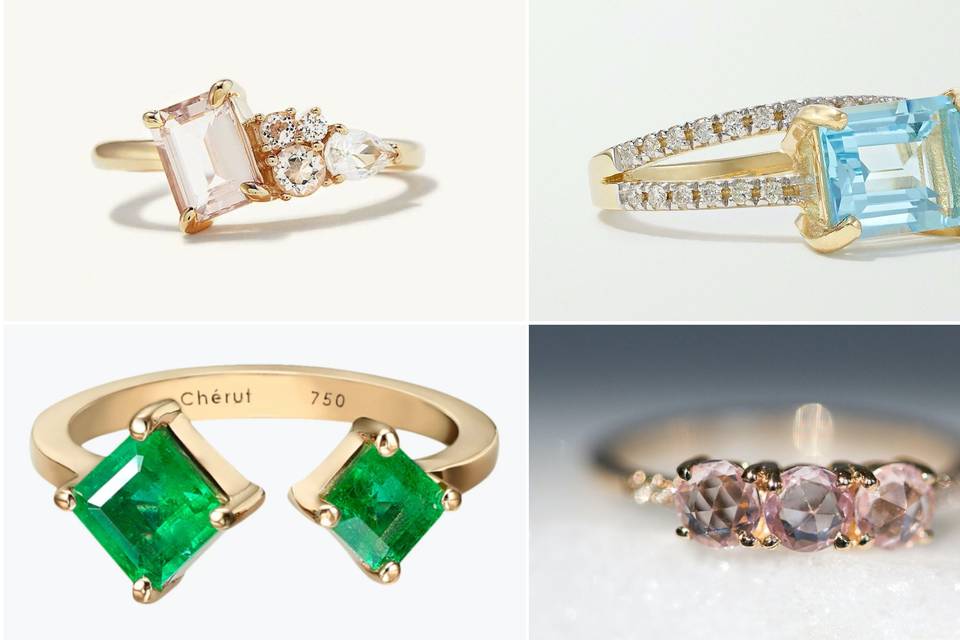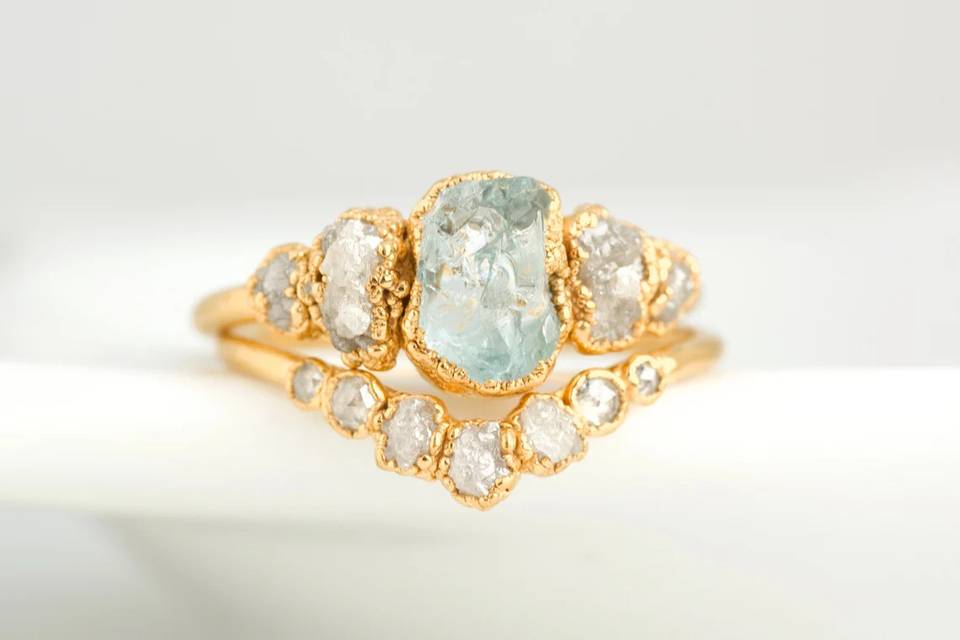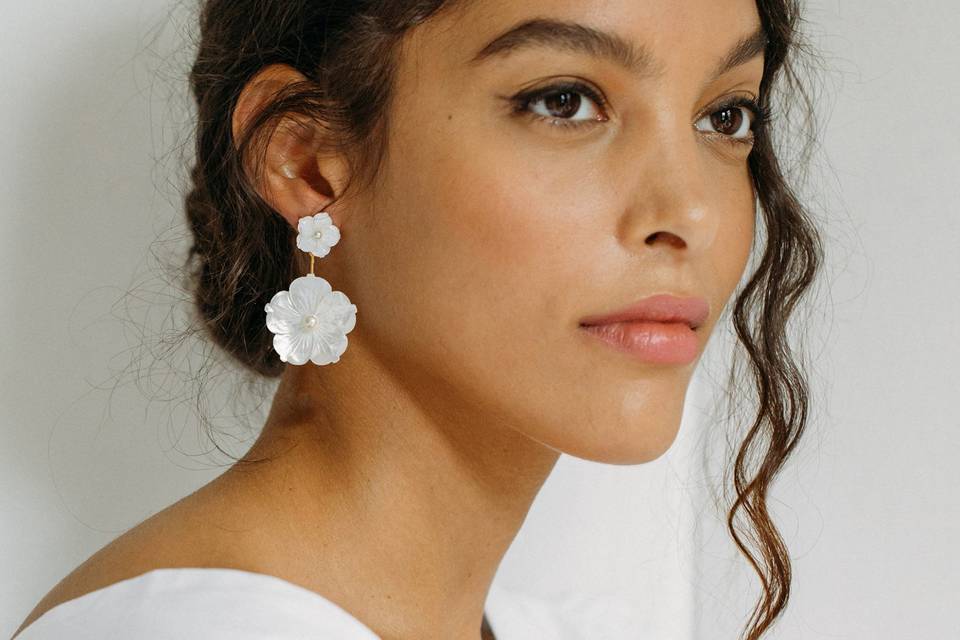The 4 C’s of Diamonds, Explained
To help you understand the 4 C’s of diamonds a bit better, we created a quick reference guide detailing the differences and importance of color, cut, clarity and carat.

When it comes to diamonds, there’s a lot more to consider than just the sparkle. Every diamond has its own unique characteristics and qualities. Once you get to a jewelry store to look at or purchase an engagement ring, the retailer is certain to ask you have you feel about the 4 C’s of diamonds. The what? The 4 C’s are the GIA’s (the Gemological Institute of America) grading system for a diamond. The 4 C’s—cut, clarity, carat weight, and color—follow a globally accepted standard that assesses the quality of your diamond, and therefore it’s price. Here’s a guide to help you understand the 4 C’s of diamonds a bit better:

Diamond Color
When it comes to color on a diamond, we’re actually talking about a lack of color. Diamonds are graded on the absence of color: a “pure” diamond has no hue. Think of it like a drop of pure, crystal clear water. A pure diamond with no hue has a higher value. But don’t think you’ll see this easily with an untrained eye. Most hue differences are so subtle that only a professional can tell the difference—and they measure hue under very specific controlled lighting and viewing conditions. That being said, the color of your diamond can cause a big difference in price—the clearer the hue, the more expensive. Color is graded on a letter system, starting at D. A “D” is completely colorless, an “I”, for instance” has faint color, and a “Y” has light color. A jeweler can help show you the difference and tell you where a diamond falls on this scale.
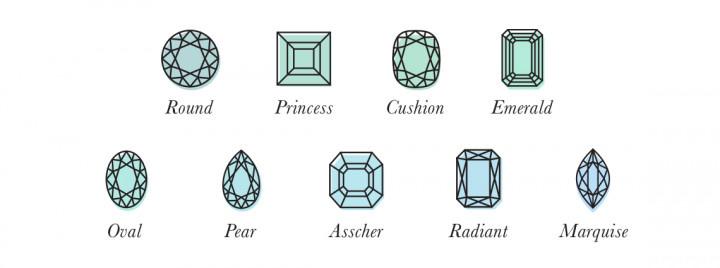
Diamond Cut
Ever notice the rainbow a diamond reflects on surfaces when the light hits just right? That’s due to the diamond’s cut, one of the 4 C's of diamonds. Most of us think about cut as round, princess, heart, oval, etc. But in reality, the cut of a diamond is about the diamond’s facets and how they interact with light—not the shape it will appear as sitting on your band. Diamond cutters are artists in their craft, and fashion the stone with proportions, symmetry, and polish in mind. Cut grading is measured on a scale of five: Excellent (the diamond has an even pattern of bright and dark areas); Very Good (the diamond is bright and polished, there may be some increased darkness); Good (a more limited grade with dark areas); Fair (there’s a lack of contrast when your diamond is face up); and Poor (the diamond’s diameter makes it appear smaller than the carat indicates). The higher the quality of the cut (excellent or very good) the more expensive the stone will be. Cut also takes into consideration the weight of the diamond as compared to its diameter, its thickness or durability, and its polish.

Diamond Clarity
Clarity refers to blemishes on the diamond. Diamonds are exposed to extreme heat and pressure deep in the earth, so when they’re extracted and shaped into the stone we’re familiar with, they often have internal characteristics (inclusions) and external ones (blemishes). Clarity is the determination of how these characteristics affect the appearance of the stone. The closer to pure (there is technically no completely pure diamond), or flawless, the diamond, the higher its quality and therefore its price. Diamond clarity is graded on a scale from flawless, with no blemishes or inclusions visible at 10x magnification to very slightly included (noticeable from a trained eye by very minor) to included (inclusions are obvious and may affect transparency and brilliance). And there are levels of blemishes and inclusions that vary along this 11-point scale.
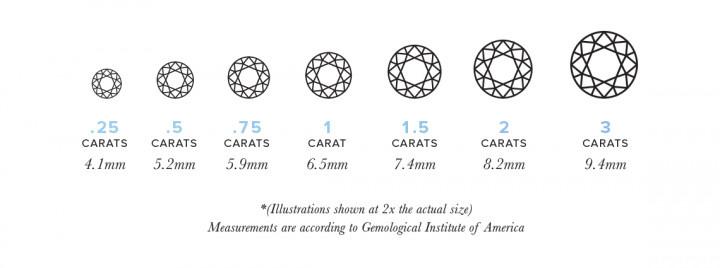
Diamond Carat Weight
Ah, carats. The one of the 4 C’s of diamonds that many of us are most familiar with. Carats refer to a diamond’s weight, and ultimately how it appears in size. One “carat” is 200 milligrams. Sometimes, jewelers describe diamonds under one carat by points—a diamond that is .25 carats may be called a “25-pointer.” Diamonds that are one carat or greater are referred to as carats and decimals, ie: 1.08 carats. If all 3 of the other 4 C’s are equal, a diamond increases in price with the carat weight. That being said, larger diamonds that have lesser clarity, color, or cut, may be less expensive than a smaller diamond with flawless clarity, excellent cut, or D clarity. So when weighing your options, you must consider both the size and quality of the diamond before making a purchase.

